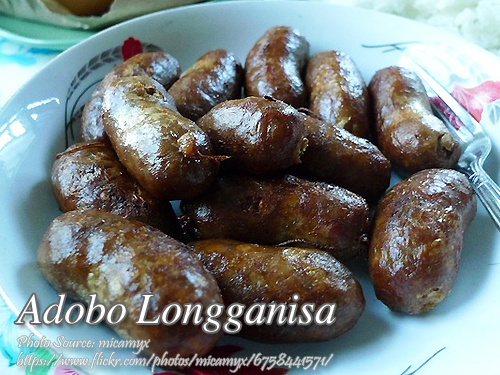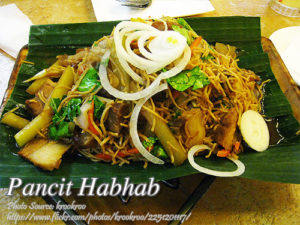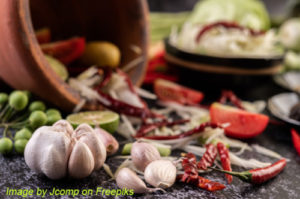This is another variant of longganisa which is popular in Imus Cavite called adobo longganisa. If adobo is one of your favorite dishes, then I think this is a kind of longganisa that you will love to eat also. This is similar to Vigan or Lucban longganisa because it is garlicky and salty and not sweet as the common longganisa. But its up to you if you want to put a little sugar on this longganisa because some pork adobo has some sugar in it. That is also how I cook my adobo with a little sweet taste.
Adobo Longganisa: A Taste of Home and Tradition
The moment the aroma starts to waft through the kitchen, I can’t help but feel a sense of nostalgia. This dish, popular in Imus, Cavite, has a way of making me remember lazy Sunday mornings when my siblings and I would gather around the table, waiting for my mother to finish frying these delicious sausages. The sizzle of the longganisa in the pan was a familiar soundtrack, and the garlicky, tangy scent was a promise of a hearty breakfast to come.
If you love adobo, this unique twist on longganisa will undoubtedly become a favorite. It combines the savory, garlicky, and slightly tangy flavors of the classic Filipino adobo with the rich, satisfying texture of longganisa. Unlike the sweeter versions of longganisa popular in other parts of the Philippines, adobo longganisa is salty, bold, and full of character, much like its inspiration.
What Makes Adobo Longganisa Unique
Adobo longganisa stands out because of its flavor profile, which takes cues from the beloved Filipino adobo. It’s a marriage of well-loved tastes: garlic, vinegar, soy sauce, and pepper. These are the same ingredients that give adobo its distinct tangy and savory kick. However, in this Caviteño specialty, the flavors are encased in juicy ground pork, making every bite an explosion of taste.
Growing up, my uncle Tito Jun, who hails from Cavite, would always tell us, “The secret to a good adobo longganisa is in the balance of flavors and the use of atchuete oil.” He’d insist that the bright red hue not only makes the dish visually appealing but also adds a subtle nutty undertone to the sausages. And he was right. That atchuete oil was the magic that transformed a simple sausage into a showstopper.
The Role of Atchuete Oil
Making atchuete oil is a simple yet important step in preparing the longganisa. You start by frying atchuete seeds and laurel leaves in cooking oil over low heat until the oil turns a deep red. Straining the seeds leaves you with a vibrant oil that’s ready to enhance the dish. This technique does more than add color; it introduces a subtle earthiness that complements the bold flavors of the vinegar and soy sauce.
My cousin Lila swears by this step and never skips it when making her batch. She likes to tell me, “If you skip the atchuete oil, you’re missing half the experience” And she’s right—it’s a detail that makes all the difference.
The Art of Stuffing and Drying Longganisa
Preparing adobo longganisa is a labor of love, but every step is worth it. Once you’ve mixed the ground pork with garlic, black pepper, salt, vinegar, soy sauce, and atchuete oil, the mixture needs time to marinate. This resting period allows the flavors to meld together, creating a robust taste profile.
The next step is stuffing the seasoned meat into hog casings. I remember helping my mom with this task as a child. My job was to hold the casing steady while she used a funnel to fill it with the meat mixture. We’d laugh as I struggled to keep the casing from slipping, but those moments are some of my fondest memories.
Drying the sausages under the sun for a few hours is another crucial step. This process not only helps preserve the longganisa but also deepens its flavor. My grandmother used to say that the sun’s warmth imparted a special touch, as though nature itself was helping to perfect the dish.
Cooking Adobo Longganisa
When it’s time to cook the longganisa, the process is simple yet satisfying. You start by boiling the sausages in a small amount of water. This step ensures that the meat cooks through. Once the water evaporates, a bit of oil is added to the pan, and the sausages are fried until golden brown and slightly crispy on the outside.
The smell alone is enough to make your mouth water. I’ve often found my younger brother sneaking pieces straight from the pan, unable to wait for the rest of the meal to be served. Adobo longganisa pairs perfectly with garlic fried rice and a sunny-side-up egg, making it the ultimate silog meal.
A Brief History of Longganisa
Longganisa has its roots in the Spanish chorizo, brought to the Philippines during the colonial period. Over time, Filipinos adapted the recipe to suit local tastes, resulting in the diverse range of longganisa varieties we have today. From the sweet hamonado-style of Pampanga to the garlicky variants of Vigan, longganisa showcases the creativity and resourcefulness of Filipino cooks.
With its unique flavor inspired by one of the country’s most iconic dishes, is a testament to this culinary heritage. It’s a dish that not only satisfies the palate but also connects us to our roots and traditions.
Why You Should Try Adobo Longganisa
Adobo longganisa is more than just a meal; it’s a story on a plate. Every bite carries the flavors of family, tradition, and the rich culinary history of the Philippines. Whether you’re new to cooking or a seasoned pro, this dish is a must-try. Its bold flavors and comforting familiarity are sure to win over anyone who takes a bite.
So, the next time you’re looking to bring a taste of home to your table, give this longganisa a try. Like my Tito Jun always says, “Food tastes better when it’s made with love and a little bit of nostalgia.
How to Make Adobo Longganisa
Ingredients
- 1 kilo ground pork
- 125 grams garlic minced
- 1/2 Tbsp. ground black pepper
- 1/2 tsp. salt
- 1/8 cup vinegar sukang iloko
- 1/8 cup soy sauce
- 1 Tbsp. atchuete seeds
- 2 Tbsp. cooking oil
- 3 pcs laurel leaves
- hog casing
Instructions
How to make Adobo Longganisa:
- To make atchuete oil, in a pan, heat cooking oil and put atchuete seeds and laurel leaves. Fry the in low heat until the oil turns color red. Cool and strain the seeds from the oil. Set aside the atchuete oil.
- In a mixing bowl, combine ground pork, garlic, black pepper, salt, vinegar, soy sauce, and atchuete oil. Mix well until all the ingredients are well combined.
- Store in the refrigerator overnight or at least 3 hours before stuffing in the hog casing. If you are using dried hog casing, soak in warm water for 30 minutes before using.
- Using a sausage stuffer or a funnel, insert the first end of the hog casing on the funnel and fill it with the meat mixture. Divide the longganisa into 2 to 3 inch links by twisting and tie with strings.
- Dry under the sun for half a day or at least 3 to 4 hours before cooking or storing in the freezer. To cook the longganisa, put a small amount of water in a pan and boil unit the liquid evaporates. Then fry with a some cooking oil until brown.
Notes
Cooking Tips:
Achieve Perfect Flavor Balance with Marination Time
To bring out the best flavors in your adobo longganisa, let the pork mixture marinate overnight or for at least three hours. This allows the garlic, vinegar, and soy sauce to deeply penetrate the meat, creating a richer and more savory taste. The longer marination ensures every bite is packed with bold and authentic flavors.Properly Prepare Your Atchuete Oil
Low heat is key when making atchuete oil to avoid burning the seeds, which can result in a bitter taste. Stir the seeds occasionally as they cook, and once the oil turns a vibrant red, strain it immediately to remove any residue. This simple step adds a touch of nuttiness and elevates the color of your longganisa.Ensure Even Drying for Better Texture
If drying your longganisa under the sun, hang the sausages in a cool, dry area with good airflow to ensure even drying. Proper drying helps the casing firm up, giving the longganisa its satisfying bite and enhancing its shelf life. Avoid humid environments, as they can compromise the drying process and the overall quality of the sausage.






hi Manny,
just wondering if i could make this as longganisang “hubad”? If so how do i cure it in the fridge? and lastly, after curing, do i just fry it straight away or do i still need to add water?
Thank you. i learned how to cook because of you.
Hi Vannessa, in the instruction above there is a curing process by placing it in the fridge overnight before stuffing it in the hog casing. But you can also make it as skinless longganisa in case you don’t like to use hog casing.
You can use wax paper cut into squares and roll the meat mixture until you shape it into logs. Then freeze it. You can either fry it immediately or put some water first in the pan and boil it until the liquid evaporates then put some oil and fry it. Just don’t forget to remove the wax paper before cooking! 🙂 Thanks also for sharing your comment!
hi mr. Manny,
i have a few questions, i want to make this lngganisa as “hubad”, with that said how do i cure it in the fridge? and do i fry it right away, no need to boil it first?
Thank you so much for all the recipes.